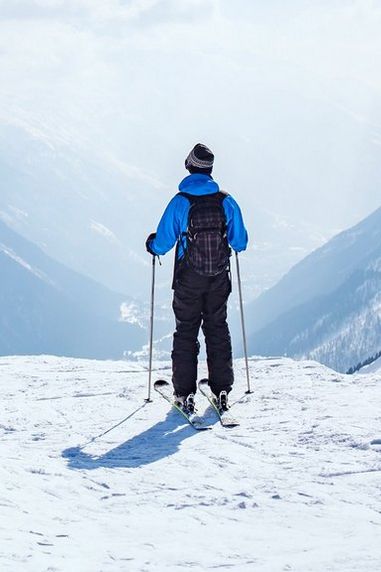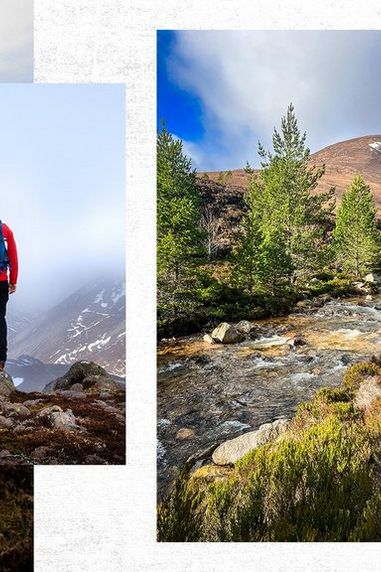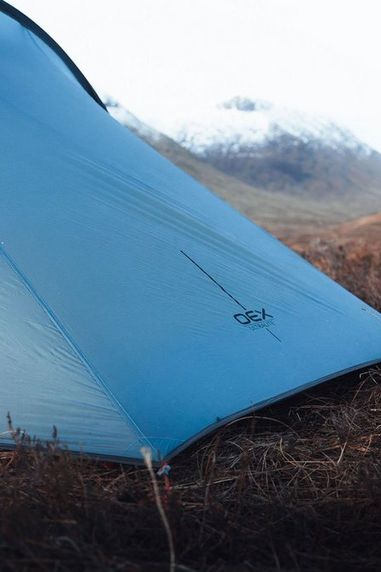Crib Goch - Arguably the UK’s most popular ridge scramble, but what do you need to know before taking on Snowdonia’s infamous “Red Ridge”? Mountain leader and climbing instructor, Alex (A.K.A @scramblethisuk), gives us his expert guidance on tackling Snowdonia’s ultimate ridge.

Why is Crib Goch so famous?
The odds are if you asked any outdoorsy folk to name a ‘scramble’, nine out of ten people will give you the name Crib Goch. There are a lots of reasons for this. It is one of the few ‘knife’ edge ridges at its grade in the UK. Its views, length and exposure are unrivalled, especially south of Scotland. Linking it with a summit of the highest mountain in Wales, Yr Wyddfa (Snowdon) or completing it as part of the ‘Snowdon Horseshoe’ makes it one of the finest mountain days in the country.
For all its exposure, the technical difficulty is actually fairly easy, and everyone who is serious about improving their mountaineering knowledge and skills should traverse this ridge at least once in their lifetime. Here's some tips on how to approach it safely.

Don’t ‘scramble’ before you can walk
Having taken hundreds of people across the ridge, I witness the sheer volume of people attempting it ever year. If I had a pound for every time I have helped stragglers, confidence roped a stranded individual, or simply stopped a group from starting up the wrong ridge, I would be a very rich man indeed!
Although the ridgeline would seem very easy to follow, weather plays an enormous part and route finding can become difficult as visibility decreases.
On the flip side, if you are lucky enough to have fair weather and full visibility, the sheer exposure on both the East & West flanks of the ridge, which are usually hidden beneath banks of cloud, is very much in your face. This has left hundreds of first time ridge walkers sat down waiting for someone to rescue them, mostly from their own heads.
So my first piece of advice to anyone wishing to tackle Crib Goch is to gain some experience somewhere else first.
My first port of call would be out of the Snowdonia National Park and up to the Lakes. Striding Edge on Helvellyn is a suitable compromise, as the exposure is significantly decreased and the ridgeline is wider. In addition, a footpath is available next to the ridge so escape is easy enough.
After this, I’d look to tackle some of the other Welsh Classics, the Ddaer Du Rudge on Moel Siabod and finally, y Gribin, in the Ogwen Valley. Once you have these under your belt, you will be significantly better prepared to take on the ‘Red Ridge’, safe in the knowledge you have already completed several other ridges at an equal grade and with similar technical difficulty.
On the subject of grades, if you are new to scrambling, it’s crucial to understand that not all routes in the same grade are made equal. There are easier and harder routes at the Grade 1 level. Outside of the actual route itself, the biggest contributory factor to making things harder, or sometimes even bumping the route into Grade 2 territory, is… THE WEATHER
For that reason alone, you should only attempt Crib Goch in the best possible conditions. High wind and rain are your biggest foes in that respect, so stick to a nice dry day with winds well below 30mph. If you see the magic 30mph number, whether that is wind speed or max gust speed, it’s time to pick another location or abandon the outing altogether.

A well-trodden path
There are plenty of fun and creative ways to gain the East Ridge of Crib Goch, which would be the usual starting point for a traverse. For ease and to lessen complexity, I will always advocate first timers or those with less experience to start on the PYG track from Pen y Pass.
Follow the PYG over rocky steps and through the boulders until the path arcs round to the right towards an area where the ground rears up out of the path. The first section comprises rocky steps, eventually becoming a rocky path again that continues up to Bwylch y Moch.
Here is where you say goodbye to the main path and follow the path signposted - Crib Goch. Continue along the path to the left, and up some rocky steps which deliver you to the base of the East Ridge.

Serious terrain
Beyond this section, it’s time to get ultra vigilant and remember you are now in scrambling territory. The first obstacle should now be in view, the slabs and walls of rock between you and the crest of the ridge up above.
Although it may look intimidating, the hand and footholds are large and plentiful - the real issue is route finding. I will always advocate having a guidebook for your planned scramble to hand, and a photo of said pages in case you disastrously drop your book (yes, I have done this!). The biggest advantage of a guidebook is having a written description of the route and ‘Topo’ photographs which show you specifically which ‘line’ you need to take.
Being able to identify the key features of the route, and ticking them off as you are climbing, is crucial for route finding.
Climb the blocky wall with good feet and handholds to the left of the base. Go right below another step and take the central gully up to a small terraced area with another wall above it. Here you will climb up the ‘smooth corner’, which is the most well-used line. Beyond this, the ridge really opens up, and it’s up to you which line you take up the exposed open rib. For route finding, I have always found trying to stay as close to the crest as possible is the safest option.
A common newbie mistake is failing to keep your eye on that ‘line’ at all times and from all angles. What you see at the start of the scramble from a distance will not be what you see when up close and personal with it. Things like obvious rock formations and features can be obstructed or just disappear into their surroundings. That is why making a mental note of the line and features while ascending is imperative.
For me, a guidebook is essential, but another significant piece of kit I wouldn’t be without is a good old map. I won’t ponder the paper vs electronic debate here. All I can say is that having the ability to know where I am just by looking at my surroundings and comparing with the contour lines on a map is an invaluable thing to have in my navigation arsenal.

Where the real ridge begins
As you continue up the crest, you will quickly get to a small bay area, which is the junction from the East ridge to the North ridge. This is where the real ridge begins! As noted earlier, the weather plays a significant role on this ridge. Due to its popularity, plenty of rock has become polished and even with just a lick of damp, it can feel like an ice rink!
If the wind picks up, the exposure feels inordinately worse. Do not panic. Keep your steps small and take extra care with your foot placements. Stepping slightly down to the left and holding the ridge line with your right hand will see you through, even though it may feel like the scariest thing you have done in your life!
The good news is the traverse of the ridge proper; is technically very easy. It is, however, extremely exposed and completely inescapable! Using the crest as a handrail (with your right hand), work your way slowly and surely across the ridge, past the white quartz band and onto the summit of Crib Goch (no trig, I’m afraid).
After the summit, stay to the left of the ridge, eventually dipping below the first and second pinnacles to your right. At the narrow slot between the second and third pinnacles, swing round to the right of the ridge. Scramble up the very exposed ‘gangway/catwalk’ over the third pinnacle and drop to the flat area below, Bwlych Coch.

This is the end of Crib Goch, but not your day out…
To the left is a steep grassy descent from Bwylch Coch that will eventually rejoin the PYG track. This route includes down climbing and route finding around several mini buttresses and crags which, for a beginner, is ill advised. I only use this route in summer and never go with clients.
To the right is an easy descent into Cwm Uchaf and back onto the A4086 (Nant Peris Pass). You will need a navigational aid, be it a map or phone/GPS as the path can become indistinct in poor weather and winter conditions.
Finally, the significantly longer and much more entertaining option is to keep going straight, up and over Crib y Ddysgl, the second section of the ridge. If you plumb for this option, you can also tick off the summits of Garnedd Ugain and Snowdon as well.
Crib y Ddysgl has an easier line you can take, but should you insist on continuing up the ridge line proper; the route is just as demanding as Crib Goch. Beyond Crib y Ddysgl, continue up and over Garnedd Ugain onto the junction where you will rejoin the main path up to Snowdon’s summit some 200m ahead. After summiting Snowdon, rejoin the PYG track back to Nant Peris, where your adventure began.
Inspired to take on a scramble but wnat to learn the ropes first? Seek out a course with a Mountain Leader like Alex who specialises in the mountain range that you wish to tackle and get to grips with the essential skills and knowledge to help keep you safe and successful when scrambling summits.



